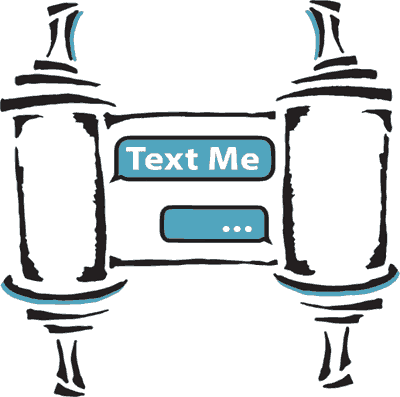Initial Questions
- What does it mean to use “too much” technology?
- What does it mean to use “too little” technology?
- When, like Goldilocks in the Three Bears, do I feel like my use of technology is neither too little or too much but just right?
- Who is a role model for me of the proper uses of technology (neither too much or too little)?

My teaching of eighth graders at the Heilicher Minneapolis Jewish Day School convinced me that this folksy, yet theologically rich tale begged for a second set of notes to bring the tale into the digital age. I had spent several months working with eighth graders helping them develop a personal brit/covenant focused on their uses of technology. One day one of the students asked me with an absolutely straight face, “Rabbi Jeff, are you anti-technology?”
There is a personal side of my emphatic response of “No I am not anti-technology.” Recently, I have felt fortunate that a very dear cousin is likely to survive her battle with cancer, following the most advanced form of proton radiation therapy available at the Mayo clinic. Almost a dozen years ago, when my sister was dying of cancer she desperately wanted to hear the voices of her family members joined together. Family members for their part wanted to pray for a miraculous recovery. We planned a healing service where we could all pray, laugh, and cry together courtesy of a free conference call service. How could I be anything but “pro” technology when I think of these stories?
Still, my student’s comment brought me up short and left me feeling a bit dismayed. It made me aware that I may have given mixed messages to my students. I was challenged to clarify the subtle differences between terms such as criticism, doubt, ambiguity, and perhaps most of all paradox. For indeed the message I hoped to convey is that we simultaneously and somewhat paradoxically both under and over use technology. Along one dimension, this corresponds to our lack of creativity in utilizing the resources for Jewish living and learning presently available and digital opportunities to engage in tikun olam/world repair, improvement, and transformation; on the other side of the spectrum lie the horror stories of astronomical hours devoted to screen time and frightening tales of cyberbullying.
As a response to my own surprise at failing to communicate my guiding assumption regarding this paradox, I developed a new instructional prop. I now have a pair of pants that I keep around whenever I am queried by a student about my own attitude about technology. The pants, an old pair of jeans, have four pockets with one note in each pocket. The notes in the front two pockets come from the Hasidic teaching discussed above; the back pockets contain notes with a technological spin:
- Remember: Human Beings are made of dust and return to the dust
- Remember: You are made just a little lower than the angels; you are God-like
- Remember: Human and Jewish life can be made spiritually, intellectually, and ethically so much richer with digital resources
- Remember: Your devices and new technologies can do harm as well as good; they can distract from your Godly work
